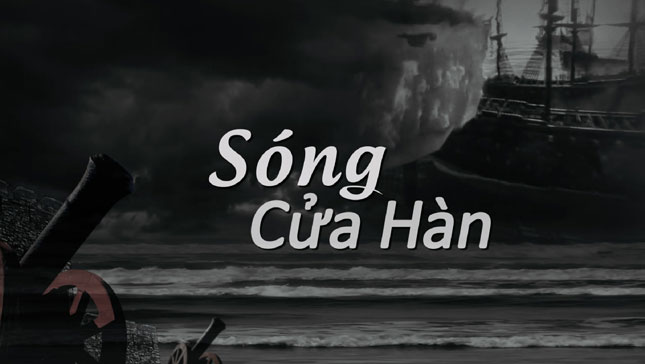Documentary on Viet Nam's struggle against French-Spanish forces
A worth-watching documentary film, entitled ‘Song Cua Han’ (Waves on the Han River Mouth), recently made its debut to the public.
 |
| The first scene of ‘Song Cua Han’ |
The 30-minute film is the brainchild of Outstanding Artist Huynh Hung, the Director of the municipal Director of Culture and Sports, vividly reflecting Viet Nam’s about 18-month struggle against the French-Spanish coalition forces invading the city between 1858 and 1860.
In reality, the historic victory over these foreign invaders has clearly marked a strategic milestone in the country’s whole resistance war against French troops, and created an important change in the national history.
On the spotlight of ‘Song Cua Han’ are time-honoured local historical sites closely linked to the battles, including the Dien Hai Citadel, the Khue Trung and Phuoc Ninh cemeteries for Vietnamese martyrs who sacrificed their lives for national liberation in the resistance war against the French-Spanish troops, and the Y-Pha-Nho cemetery for the deceased French and Spanish soldiers.
Artist Huynh Hung remarked that his film not only highly hails the undaunted courage and indomitable fighting spirit of revolutionary soldiers from Da Nang, and Viet Nam as a whole, but it also clearly demonstrates the important role of the reign of Vietnamese Emperor Tu Duc (1829 - 1883) in Viet Nam’s victory over the invaders.
In clearer explanation, the film offers objective opinions about King Tu Duc who showed his great efforts and strong determination to fight against the invaders.
In addition to his effective military tactics, the talented king dispatched troops to the historic battles in an effective manner. Especially, he instructed famous general Nguyen Tri Phuong (1800 - 1873) to command Vietnamese troops in the fight against the French-Spanish coalition forces at that time.
At that time, the Vietnamese army comprised a total of more than 4,000 militants from the former Nam Ngai and Binh Phu provinces, under the leadership of Governor Nguyen Tri Phuong.
In particular, the emperor, himself, also gave the approval to the collection of the remains of martyrs in order for them to be reburied in the Khue Trung and Phuoc Ninh cemeteries, the first of their kinds in Viet Nam at that time.
Artist Huynh Hung’s film has been highly praised by many cultural researchers and managers nationwide.
The strong-willed and talented artist, along with his cast and crew, will exert even more efforts to perfect the film in order for it to be shown at seminar and related events, as well as introduced to visitors to the Museum of Da Nang in the coming time.
In a similar vein, this special spiritual product will be also shown at future extracurricular activities for local pupils.
These positive moves will help viewers understand more about the heroic chapter of the history of Da Nang, and that of the country as a whole.
The year ahead, 2018, will mark the 160 anniversary of a joint French and Spanish naval expedition landing at Da Nang (1 September). Hopefully, the screenings of ‘Song Cua Han’ will become a drawcard as part of a series of activities in recognition of this event.




